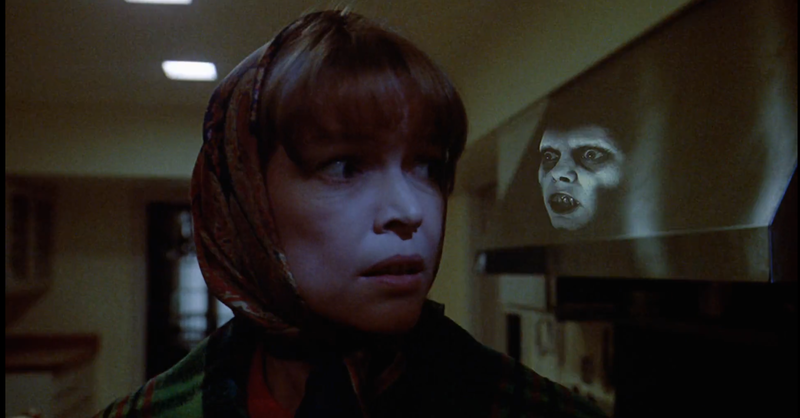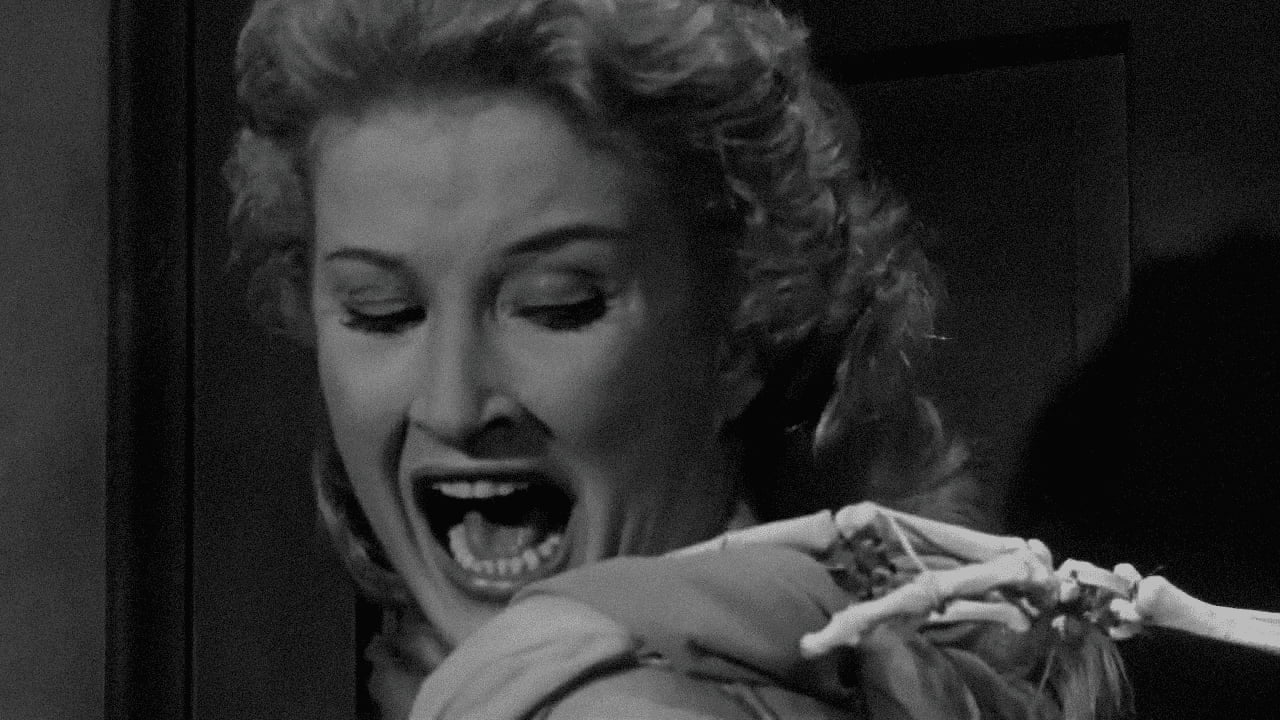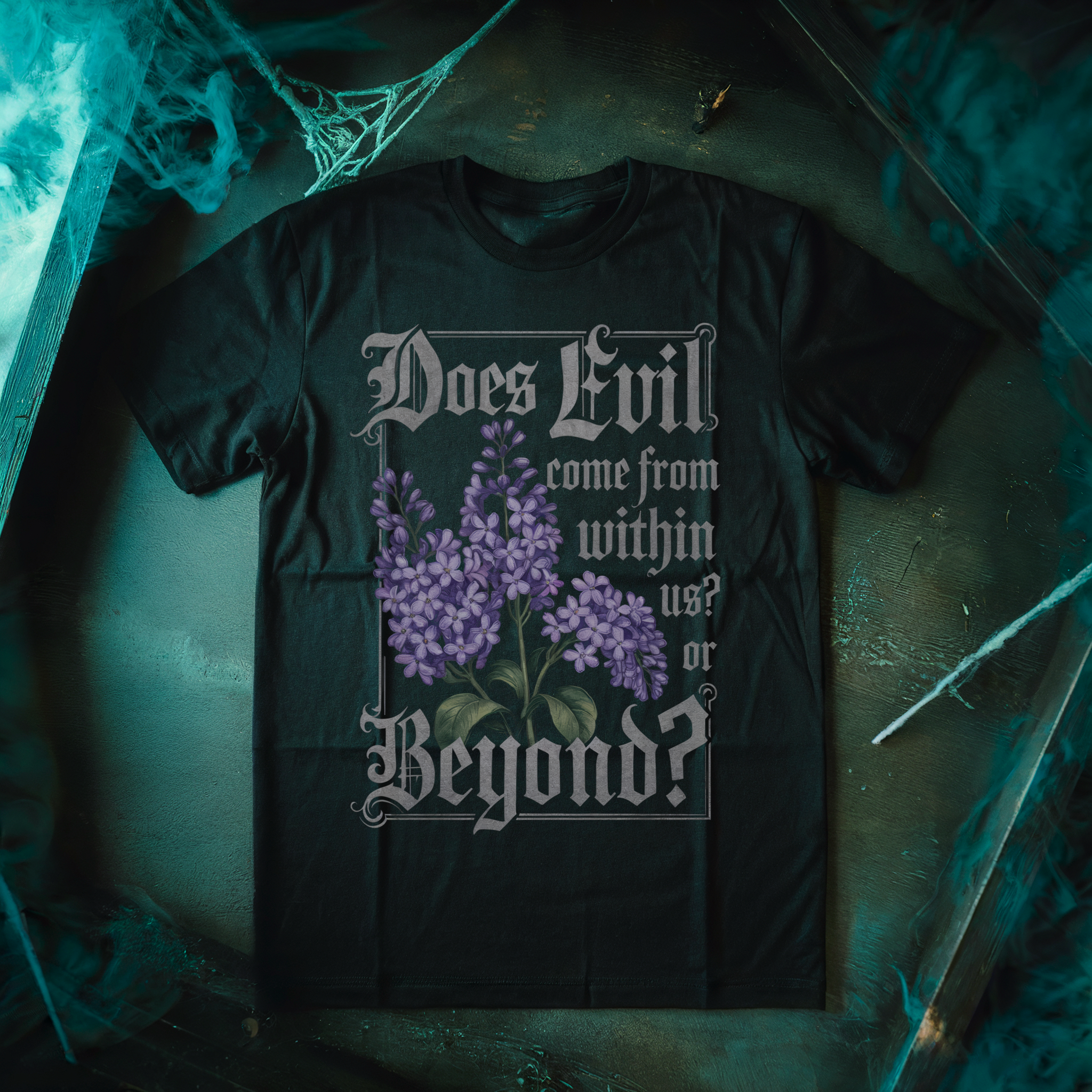As a self-proclaimed horror movie aficionado, I can say without a shadow of a doubt that there is no greater feeling than being scared out of your wits by a good old-fashioned jump scare.
You know the feeling – you’re sitting there, minding your own business, fully immersed in the world of the movie, and then BLAM! A sudden loud noise and a terrifying image flash across the screen (or even just a cat jumping out of nowhere), causing you to jump out of your seat and spill popcorn all over your date. It’s a rush unlike any other, and it’s all thanks to the evolution of the jump scare in horror movies.
Jump scares have been a staple of horror movies since their inception, but the way they’re executed has changed dramatically over the years. In this article, we’re going to take a look at how the jump scare has evolved from its humble beginnings to the heart-stopping moments we know and love today.
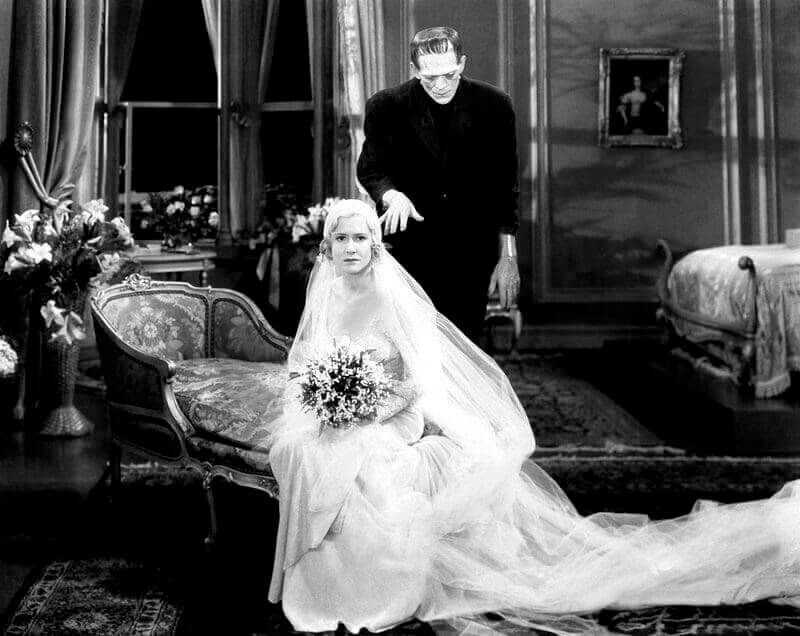
The Early Years
Ah, the early days of horror movies. Back then, filmmakers had to rely on good old-fashioned storytelling and eerie ambiance to scare the pants off audiences. And you know what? It worked. There’s something charmingly spooky about those early films, where the jump scares were a little more low-key but still effective.
Take, for example, Frankenstein (1931). When the titular monster creeps up to Elizabeth’s bedroom window, silently climbs in, and then RACES towards her with his lumbering arms up, only to cut away at the moment of attack? It’s a classic jump scare, but it’s done with such skill and subtlety that it still holds up today.
Of course, there were other ways to get audiences jumping in their seats back then. The shadow of Nosferatu creeping up the stairs, the sudden appearance of the Phantom of the Opera’s mask, the eerie creaking in The Old Dark House (1932) – these moments still have the power to give us goosebumps.

It may be a surprise to you, but the end of this early era also saw the first ‘false’ scare. Enter: the infamous ‘Lewton bus’ scare in Cat People (1942). Val Lewton was a master of cheap thrills, and he used this technique to perfection. The ‘Lewton bus’ scare involved building tension with eerie music and a slow camera pan, only to have a loud noise (like an innocuous bus driving by) startle the audience.
So next time someone tries to tell you the early days were tame, throw on Frankenstein or Cat People and watch ’em jump.
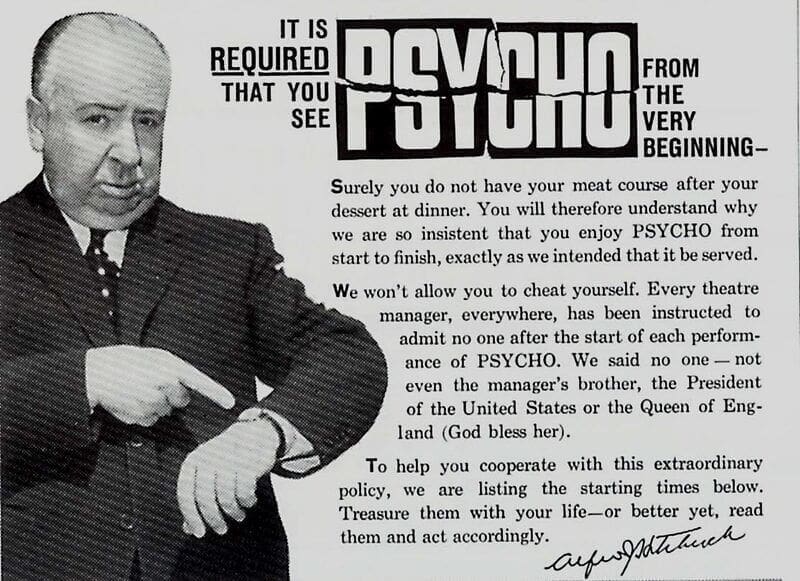
The Rise of the Gimmick
The 1950s and 60s were truly the golden age of horror gimmicks. You had the master of suspense himself, Alfred Hitchcock, whose carefully crafted horrors easily shocked early cinema-going audiences. And he always had a front-row seat to the fun, creating spooky little teasers and warnings leading up to showtime. Audiences were primed and ready to be terrified by the time they sat in their seats. Even in the traditional sense of the jump scare, whether it was Norman Bates popping out of the shadows or birds attacking out of nowhere, Hitchcock knew how to make ’em jump.
And let’s not forget about William Castle, the king of horror gimmicks. Castle would go to extreme lengths to scare his audience, from vibrating seats to flying skeletons. Who needs boring old 3D glasses when you can have a real-life skeleton swoop down and grab your popcorn?
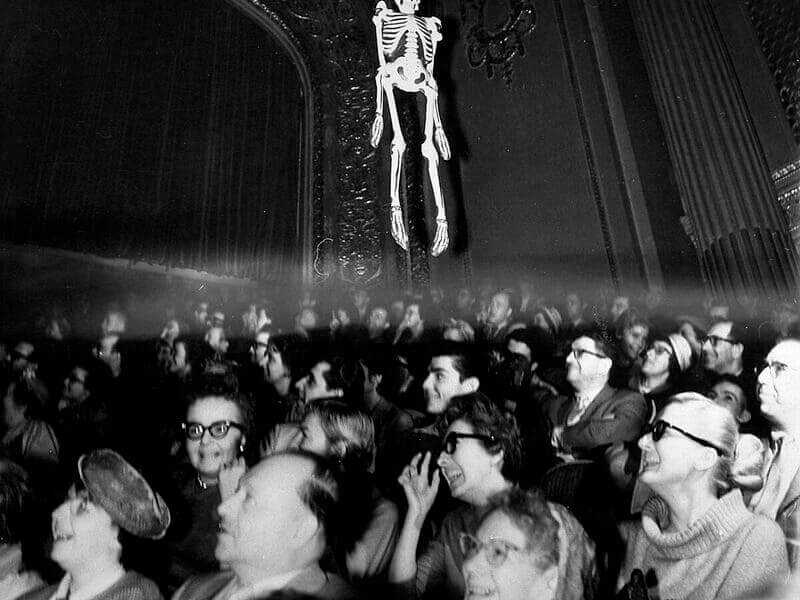
These gimmicks were the best part of going to the movies in the 50s and 60s. They made the experience so much more immersive and thrilling. Who wouldn’t want to feel like they were in the movie, getting chased by a monster or dodging a flying object? Plus, these gimmicks were just plain fun. It was like going to a carnival ride and a movie at the same time. And hey, if you got a little too scared, you could always hold on to your date and pretend it was just an excuse to get closer.
So cheers to the 50s and 60s, when horror movies weren’t just movies, they were full-on experiences. Sure, they may seem cheesy now, but back then they were cutting-edge. And who knows, maybe one day we’ll see a resurgence of these gimmicks in the horror movies of the future. After all, what’s more terrifying than a haunted house ride come to life?
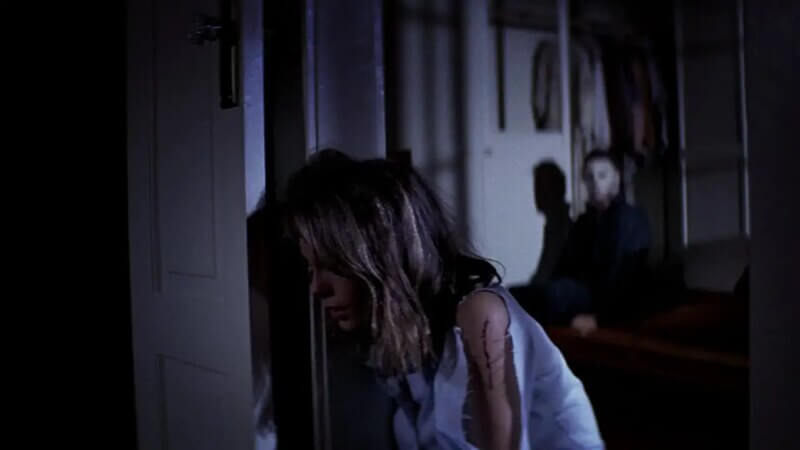
The Golden Age of Horror
The Golden Age of Horror. A time when movies were grainy, hair was big, and jump scares were…well, let’s just say they were a little more innocent back then. But don’t let that fool you, the 1970s and 80s were the birthplaces of some of the most iconic horror movies of all time.
Slasher movies were all the rage back then, and they were chock-full of classic jump scares. You know the kind: the camera pans away from a character, only to pan back and reveal someone STANDING RIGHT BEHIND THEM. Or the old standby of opening a medicine cabinet to reveal a REFLECTION OF THE KILLER! Sure, they’re overdone now, but back then they were the secret sauce of eliciting screams from the audience.
But those weren’t the only tricks up the sleeve of horror directors in the Golden Age. They also loved a good false scare, where the audience is led to believe a jump scare is coming, only to have it turn out to be a cat jumping out of a closet. Sneaky, huh? And let’s not forget about the use of sound effects to create tension and anticipation for the inevitable jump scare. The creaking of a floorboard, the rustling of leaves, the ominous music building to a crescendo…all hallmarks of horror movies from this era.
So yes, the Golden Age of Horror may have given us some teeth-grinding jump scares, but it also gave us some of the most memorable movies in the genre. And if you ask me, a little cheese never hurt anyone. Well, except for maybe the victims in those slasher films…
Millennial Mayhem
Y2k. The good ol’ slasher sequel era. When moviegoers would flock to the theaters to watch a masked killer return and return again to terrorize a group of unsuspecting teens, primed and ready to jump out of their seats at every unexpected turn. It was also the era of Scream, I Know What You Did Last Summer, and Final Destination. And boy, did they know how to do a jump scare right.
Gone were the days of slow-burn suspense, where the terror would slowly build until the final reveal. No, 90s and 00s audiences wanted their scares fast and furious. And who could blame them? With attention spans shorter than a horror movie character’s lifespan, the jump scare was the perfect way to keep them engaged.

The filmmakers of this era were masters of misdirection, using every trick in the book to make sure the audience was caught off guard. From fake scares to double scares, they knew how to keep audiences on the edge of their seats. And let’s not forget the iconic scenes that are forever etched in our minds – like when Ghostface pops up in Sidney’s house in Scream, or when the predicted plane actually explodes in Final Destination. It was a time when horror movies were fun, thrilling, and just the right amount of cheesy. And boy, did we love every minute of it.

The Modern Era
The 2010s-2020s have spoiled modern horror fans. With innovative filmmakers pushing the boundaries of what a jump scare can be, audiences have been treated to some truly terrifying moments that will haunt them forever. Take Toni Collette’s unforgettable possessed-head-banging-on-the-attic-door scene in Hereditary, for example. That’s the kind of jump scare that leaves you shaking long after the credits roll.
But it’s not just Collette and Ari Aster who’ve been serving jump scares in the past decade. Enter James Wan, the master of modern horror. His film Insidious has some of the most effective jump scares in recent memory. Who can forget the terrifying scene where the demon appears behind Patrick Wilson’s character? It’s the kind of jump scare that makes you want to sleep with the lights on for a month. In the hands of a lesser filmmaker, this scene may have fallen flat. But Wan knows exactly how to subvert expectations and create a truly terrifying jump scare.
All in all, the modern era has proven that the jump scare is far from dead. Instead, it’s evolving into something even more horrifying than before.
FilmDistrict
The Future
So what’s next for the jump scare? It’s hard to say, but if history is any indication, filmmakers will continue to push the boundaries of what’s possible. With advances in technology and storytelling techniques, the jump scare of the future could be even more terrifying than anything we’ve seen before. But one thing’s for sure – we’ll continue to be the victims at their mercy.
The evolution of jump scare in horror movies has been a wild ride. From the simple scares of the early days to the heart-stopping moments we see today, filmmakers have been finding new and creative ways to scare us for over a century. And while the jump scare may have its detractors, there’s no denying that it’s a crucial part of what makes horror movies so thrilling. So the next time you jump out of your seat during a horror movie, remember – it’s all thanks to the evolution of the jump scare.
Let us know your favorite jump scares over on Twitter or in the Nightmare on Film Street Discord!
